Aviation
The day Concorde flew into the history books
Concord the history of supersonic planes
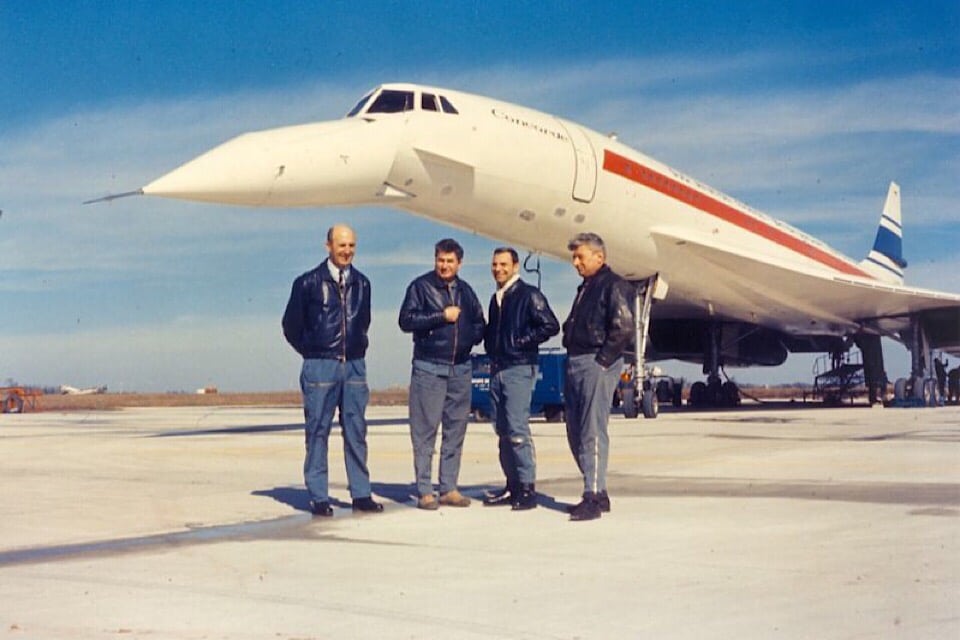
commercial aviation took a supersonic leap into the future fifty years ago, when Concorde made its maiden flight.
The roar of the engines is deafening as the flight crew push them to maximum power. After a long wait, cheers of encouragement and rippling applause reach fever pitch and Concorde 001 thunders majestically into the skies above Toulouse.
It’s 3.38pm on 2 March 1969 and the first page in the history of supersonic commercial aviation has just been written. As Concorde’s four Olympus 593 turbines carry the aircraft into the distance the joy of the technicians, engineers, employees and onlookers witnessing the moment is plain to see. Six hundred journalists from around the world are at hand to report how ‘old Europe’ has met the challenge of melding speed and technology in service of passenger transport.
The maiden flight, described by captain André Turcat as ‘a trip around the runway’ lasted just 29 minutes and did not exceed 480 kph. Alongside Turcat the crew consisted of flight mechanic Michel Rétif, flight engineer Henri Perrier and co-pilot Jacques Guignard.
On the other side of the Channel captain Brian Trubshaw, co-pilot John Cochrane and flight mechanic Brian Watts coaxed Concorde 002 into the skies between Filton and Fairford for its first flight, even shorter at 22 minutes, on 9 April that same year.
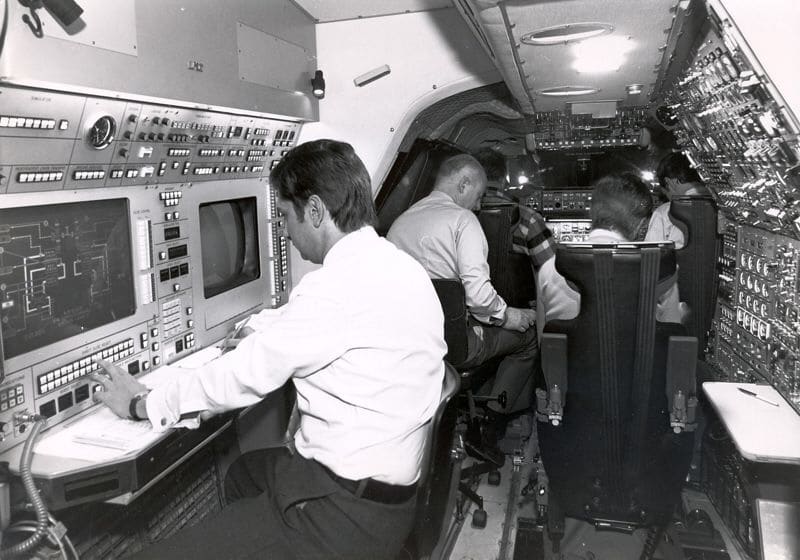

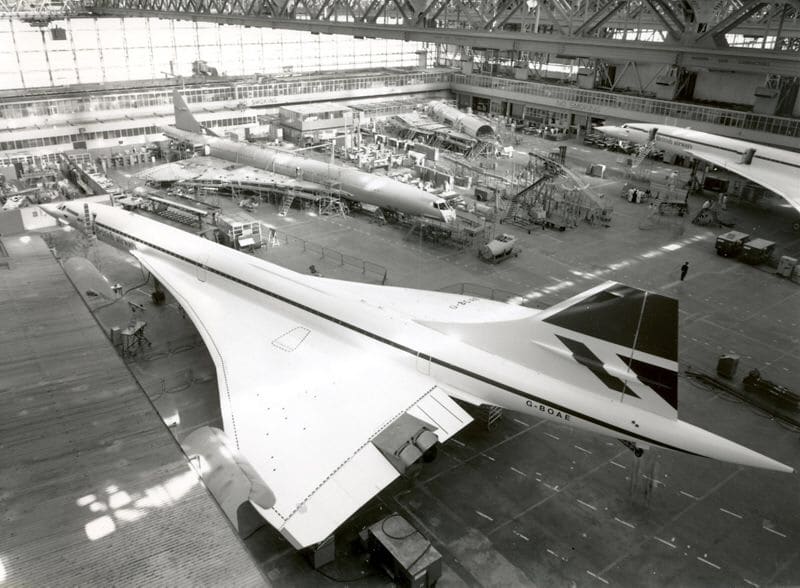

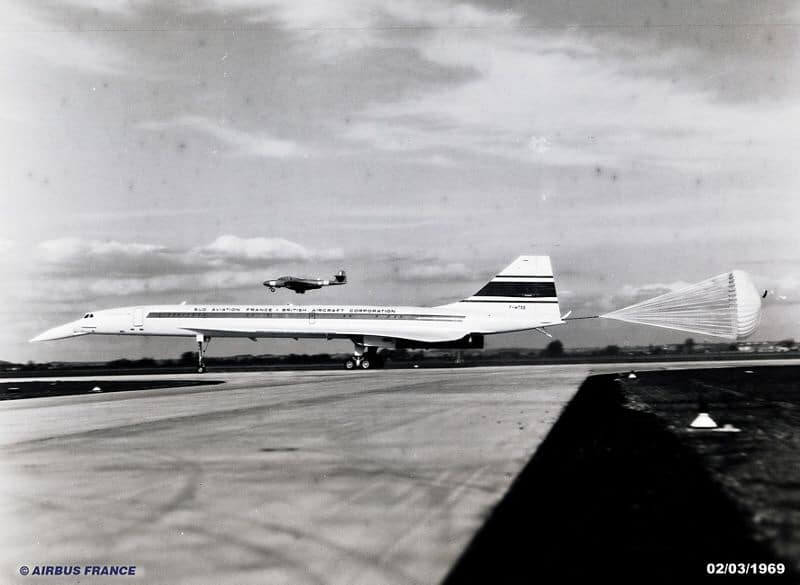

Concorde 001 first broke the sound barrier in October 1969 and reached Mach 2 during its 102nd test flight, with its English ‘brother’ achieving the same one week later. The Franco-British cooperation programme had been signed by French ambassador Geoffroy de Courcel and British aviation minister Julian Amery on 29 November 1962. It confirmed the industrial agreement between Sud Aviation and the British Aircraft Corporation outlined a month earlier. The agreement committed the two countries to a 50:50 share of Concorde’s research and assembly costs.
It took seven years to arrive at the first flight that March afternoon. Many innovations resulted, from electronic flight controls and the first cockpit sidestick to anti-skid braking systems and the movement of fuel around the aircraft in flight to adjust its centre of gravity. The experience the French and British gained during Concorde’s development meant some pitfalls were avoided when Airbus was created – such as the politically-motivated dual assembly lines, one in each country.
A further seven years were necessary before Concorde entered commercial service, in 1976. In all 16 aircraft were built and they were operated by Air France and British Airways alone. The tragic – and the type’s only – crash at Gonesse near Paris in 2000 marked the end of operations, three years later.
For over 30 years, supersonic travel made commercial aviation faster. Today it takes around seven hours to cross the Atlantic by plane; Concorde took half that time.

Aviation
Air India’s B747 Makes Its Final Journey, Waving Farewell to Fans

In a poignant moment marking the end of an era in aviation history, Air India’s iconic Boeing 747 aircraft, affectionately known as the ‘Queen of the Skies,’ embarked on its ultimate journey from Mumbai’s international airport.
The departure, bound for Plainfield, USA, where it will undergo dismantling and part-stripping under the ownership of American AerSale, signals the closure of a storied chapter for the airline.
Once revered for transporting dignitaries ranging from prime ministers to presidents, the Boeing 747 has etched itself into aviation lore. Yet, as airlines worldwide pivot towards more contemporary and cost-effective aircraft, Air India’s decision to bid farewell to its remaining Boeing 747s reflects the pragmatic realities of today’s aviation landscape.
The sale of these majestic planes to AerSale represents a strategic move by Tata Group, Air India’s new custodian, towards optimizing operational efficiency and embracing modern industry standards. Out of the four aircraft sold, two will be repurposed into freighters, while the remaining pair will be meticulously disassembled to salvage valuable components.
The final flight from Mumbai witnessed a touching tribute as pilots performed a traditional ‘Wing Wave,’ symbolizing the conclusion of the Boeing 747‘s distinguished service with Air India. This poignant gesture encapsulates the deep sentiment attached to the aircraft’s departure and its significant contribution to the airline’s legacy.
As the Boeing 747 embarks on its journey to Plainfield, USA, nostalgia permeates the air, evoking memories of its maiden flight on March 22, 1971. Over five decades, Air India operated a total of 25 Boeing 747s, each leaving an indelible mark on the annals of aviation history.
Middle East
British Airways Resumes Daily Flights to Abu Dhabi, After 4-Year hiatus
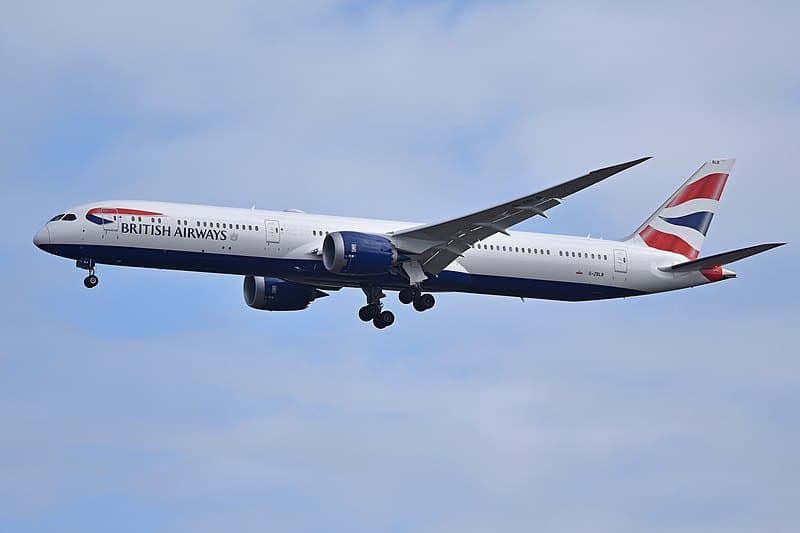
British Airways made its way back to Abu Dhabi, landing at Zayed International Airport. Following a four-year break in service, both crew and passengers were greeted with enthusiasm.
In the summer of 2024, British Airways plans to launch a daily route, utilising a Boeing 787-9, from London Heathrow to Abu Dhabi. The new route enhances ties between the UAE and the UK and expands vast worldwide network, catering to passengers who may be visiting friends and family or travelling for business.
Arriving in Abu Dhabi at 08.30+1, flight BA073 to Abu Dhabi leaves London Heathrow at 22.25. Departing at 10.10 and landing at London Heathrow at 15.20 is the inbound flight (BA072).
The chief executive officer and managing director of Abu Dhabi Airports, Elena Sorlini, stated: “We are delighted to welcome British Airways to Zayed International Airport. Their daily schedule is expected to improve connectivity and stimulate travel and business.” Visitors may experience the dynamic capital of the United Arab Emirates like never before at our brand-new, award-winning, state-of-the-art terminal, where they will be welcomed with the best kind of Emirati hospitality.”
Flight schedule:
| London Heathrow (LHR) to Zayed International (AUH)All times are local | ||||||
| Season | Flight number | Departing LHR | Arriving AUH | Flight number | Departing AUH | Arriving LHR |
| Summer ‘24 | BA73 | 22:25 | 08:30+1 | BA72 | 10:10 | 15:20 |
| Winter ‘24 | BA73 | 22:25 | 09:30+1 | BA72 | 11:10 | 15:20 |
Aviation
FAA investigation: Passenger seated in Captain’s seat inside cockpit at cruising altitude
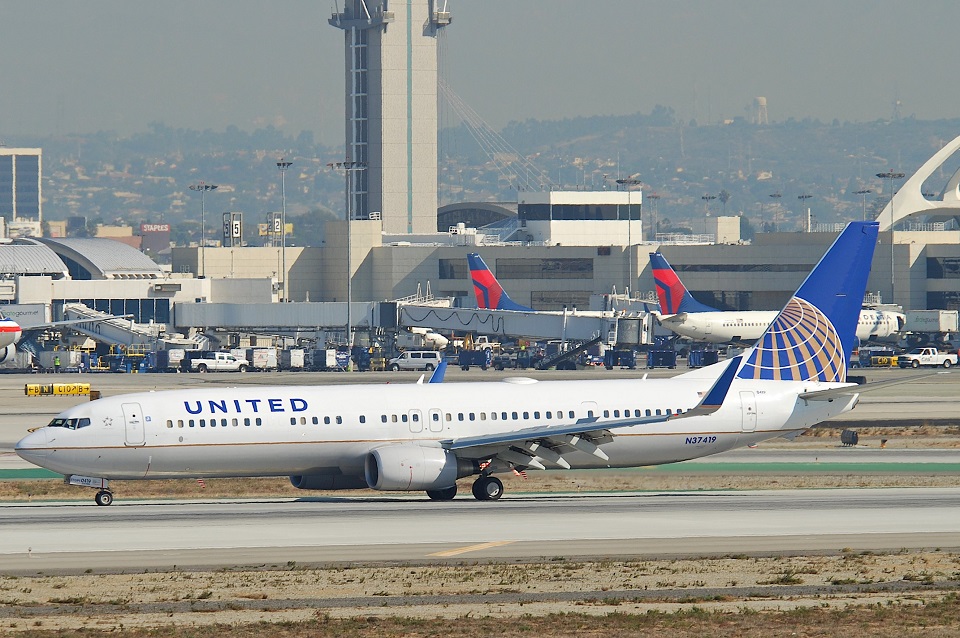
A viral video capturing a startling moment aboard a United Airlines charter flight from Denver to Toronto has triggered a federal investigation.
The footage, initially shared on social media by Hensley Meulens, the hitting coach for the Colorado Rockies baseball team, depicts a member of the coaching staff seated in one of the pilot seats while the aircraft was in mid-flight.
In his caption, Meulens expressed gratitude to the captain and first officer for allowing him this unusual experience. The video, filmed by another passenger, reveals the cockpit door open, and at one point, a third passenger briefly enters the flight deck. Alarmingly, during this time, the captain was absent from the cockpit.
Despite the flight being a private charter operated by United Airlines, company and Federal Aviation Administration (FAA) regulations strictly prohibit passengers from entering the cockpit during flight or leaving the flight deck unsecured.
United Airlines swiftly responded, expressing deep concern over the incident. A spokesperson emphasized that the video depicted an unauthorized person in the flight deck at cruising altitude with the autopilot engaged, constituting a clear violation of safety and operational policies.
The FAA confirmed that it is actively investigating the incident, highlighting that unauthorized access to the flight deck during flight is a violation of federal regulations. The agency assured that it is taking the matter seriously and will conduct a thorough examination to ensure compliance with aviation safety standards.






















